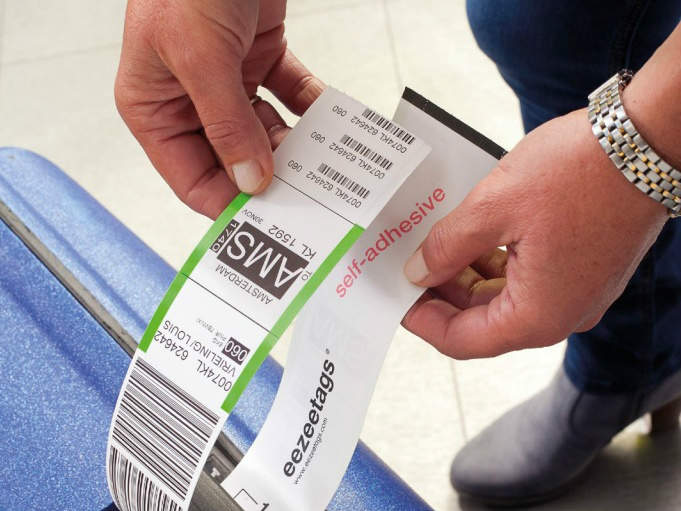
Eezeetags have been specially designed for self-tagging applications and can be used in either a one-step self-service bag-drop machine or in a two-step self-service bag-drop operation that uses a kiosk to print the bag tag and a simplified assisted or non-assisted bag-drop point.
Since Eezeetags do not have a paperliner that needs to be removed to expose the adhesive, passengers find it easier to understand how to use them and no waste is created at the point of tagging. Because Eezeetags do not stick to anything but themselves, it is impossible for passengers to tag their bags incorrectly. All this leads to a faster bag-drop operation, increasing the terminal capacity and improving the passenger experience.
There are many reasons for airports to invest in Eezeetags. As passenger numbers continue to increase, airport operators need to find ways to maximize terminal capacity, while keeping passengers happy, and a fast and seamless travel experience will help to do just that.
Happy passengers are also more likely to spend money in the terminal. In fact, research has shown that a relaxed and happy passenger is 60 times more likely to spend money in the retail area. Happy passengers are also likely to come back and travel from the same airport again, and Eezeetags can help create that seamless travel experience to keep passengers smiling. Eezeetags are more efficient to use than the standard tags used in self-service bag-drop units.
According to the company, when using a standard tag in a self-service bag-drop unit it will take the passenger on average ten seconds longer to self-tag their bag compared to using Eezeetags in the same self-service bag drop unit. These extra ten seconds make a huge positive difference in the total cost of ownership of a self-service bag-drop unit.
EasyJet, in close collaboration with Gatwick and Edinburgh airports and several bag drop suppliers, has chosen Eezeetags for its self-tagging operation, and KLM and Lufthansa have been using them for a number of years. According to SITA, 80% of airports and airlines will have invested in self-service bag drop by 2018.

